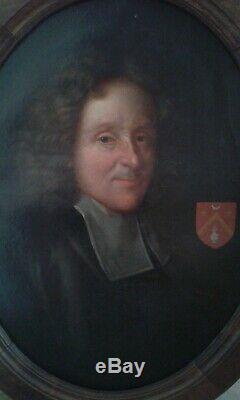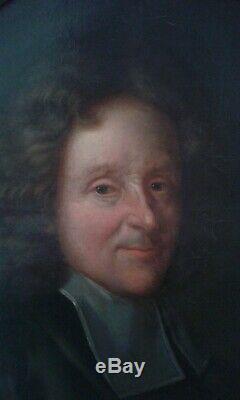
- Homepage
- Art Movement
- Characteristics
- Boxed, On Canvas (2)
- Framed (28)
- Framed, On Canvas (36)
- Framed, On Panel (6)
- Framed, On Wood (8)
- Framed, Signed (5)
- Oil On Paper (2)
- On Canvas (244)
- On Canvas, Framed (3)
- On Canvas, Signed (4)
- On Panel (40)
- On Panel, On Canvas (12)
- On Wood (15)
- On Wood, On Canvas (2)
- On Wood, On Panel (2)
- One Of A Kind (ooak) (3)
- Signed (14)
- Signed, On Canvas (70)
- Signed, On Panel (16)
- Signed, On Wood (5)
- Other (3658)
- Height
- Theme
- Abstract (3)
- Animals (16)
- Animated Landscape. (4)
- Architecture (4)
- Art (4)
- Character (45)
- Child (7)
- Flower, Tree (10)
- Genre Scene (34)
- History, War (6)
- Interior Scene (3)
- Landscape (288)
- Marine (3)
- Nude (3)
- Portrait (9)
- Portrait / Face (4)
- Religion, Mythology (26)
- Sacred Subject (9)
- Seascape, Boat (31)
- Still Life (87)
- Other (3579)
- Type
- Width
Board. Former. Oil On Canvas. Portrait Etienne Baluze. Historian. 18th








Lovely portrait of 18th Étienne Baluze. Medallion dimensions 66 cm x 48 cm with frame mahogany. A small white dot pictured. Étienne Baluze, born in tulle.
After studying at the college. From his hometown who was succeeded by the current. Where he was admitted to saint martial college, founded in. He continued to study law at university, especially under the direction of Antoine. And quickly inserted in learned circles of the city, in the entourage of the Archbishop of Toulouse, Charles de Montchal. He published his first book, antifrizonius, where he meticulously critical stonework frizon.Gallia purpurata (1638), the history of the French cardinals. He returned some time in his hometown, where he practices can be as a lawyer before becoming, in 1656. The secretary of the Archbishop of Toulouse, stone marca. The archbishop, who resides part of the year in the capital, gives it some of the scholarly work he led for several years, including his work on Catalonia, the \posthumous edition. Baluze then accompanied Monseigneur de marca in his many travels.
It is thus the Secretary of the céret conference. (March-April 1660), held to mark the new border between the kingdom of France and Catalonia, of which he wrote the report. He then attended the marriage ceremonies between Louis XIV and the Infanta of Spain, in saint-jean-de-luz (May 1660). It supports the fume cupboard.
Nine canon law theses for the baccalaureate; it is now a doctor of canon law. Who made him obtain the previous year a royal gratification of 1200 pounds per year. He became professor of canon law. Scholarly activity Baluze essentially concerns the edition of the Latin fathers. The church and Christian authors of the Middle Ages it publishes the works of Lactantius.
As the history of medieval institutions, both civilian he published an edition that was long authority of the Chapter of the Frankish kings. Years 742-922 as religious: he began publishing the acts of the councils that had been forgotten in the collection of skua fathers and Cossart. It complements this work by publishing various documents, gathered in volumes of \2 volumes, 1693). In 1695, broth Cardinal, whom he had known during his studies at the Sorbonne in the 1660s, asked him and Dom mabillon jeans. The founder of the Diplomatic. To assess the authenticity of documents. Century from the archives of the chapter brioude. Which could allow the tower to trace the origins of their family.Century by linking the ancient dukes of Aquitaine by beneficiaries counts of Auvergne. This is an escalation of time between the first families of the kingdom to be a prestigious pedigree. A number of documents of dubious authenticity, had been used in the history of the house Auvergne published by christophe justel. In 1645; and Nicolas Chorier.
The historian of the tower of the Dauphiné, was included in the second volume of his history (1672) a false note that connected the tower to tower Dauphiné Auvergne. It is close to the cardinal, a jean-pierre bar, former secretary of the royal genealogist and adviser Jean du Bouchet, who forwarded the offending items in stock cardinal.The counterfeiters were skilled, because they managed to dupe the three most famous scholars, including Baluze himself, who cited as experts unanimously gave a favorable report on July 23, 1695. But the stock Cardinal were many enemies and libels of war, both manuscripts than printed, began.
In March 1698, Baluze tried to shape his entire defense without success truly convincing. The case then followed two distinct paths. On the one hand, justice is attacked the counterfeiters, the police had identified.
Two years later, in 1700, Jean-Pierre's bar and his accomplices were arrested and, after a long and careful investigation, the bar was convicted in 1704. On the other, Baluze did not change much for his opinion convinced that the documents at issue were true. He knew he was still protected by the relatives of the former clan colbert, and he felt that his new boss, broth Cardinal was difficult to attack. Following the ultimate provocation broth Cardinal, who went abroad in the spring of 1710 Baluze fell into disgrace. July 1710; after being forced to resign his professorship at the Royal College (July 4), he was exiled by Louis XIV.
There remained only a few weeks and then got to go to Blois (where he arrived on August 13), then Nevers, probably her niece, before settling towers (20 October 1710) in the cloister Abbey Saint-Martin, where he remained until the spring of 1713. After a few months orleans, he returned to Paris at the end of November 1713.
In 1717 Baluze published in Latin a very scholarly history of his hometown, tulle. Under the title of tutelensis historiae libri tres. The book of astonishing erudition, follows the story of the capital of the Lower Limousin, from its foundation, according monastic Baluze, in the Carolingian period until the early eighteenth century; the book is complemented by a rich collection of documents, some of which are lost or destroyed today. Baluze died in Paris July 28, 1718, when he had just completed an edition of the works of St. Cyprien, Bishop of Carthage (it will be published posthumously in 1728), and he intended to continue his term editing acts of the controversial constancy council. Who tried to impose the superiority of the authority of councils on that of the sovereign pontiff. 1 and 2: Illustrations for criticism of genealogical history of the house Auvergne published on acta eruditorum. He left a rich library, comprising some 12,000 titles, its own archives, ancient manuscripts and various documents and a cabinet of curiosities, which were inventoried by two Parisian booksellers to the auction baluziana Bibliotheca, seu catalogus librorum bibliothecae v [iri] claris. The item \The seller is \This article can be shipped worldwide.- characteristics: Box <\/ li>
- Type: Oil <\/ li>
- artistic trend: French School <\/ li>
- type: classicism <\/ li>
- Theme: Portrait, Self-Portrait <\/ li>
<\/ Ul>

